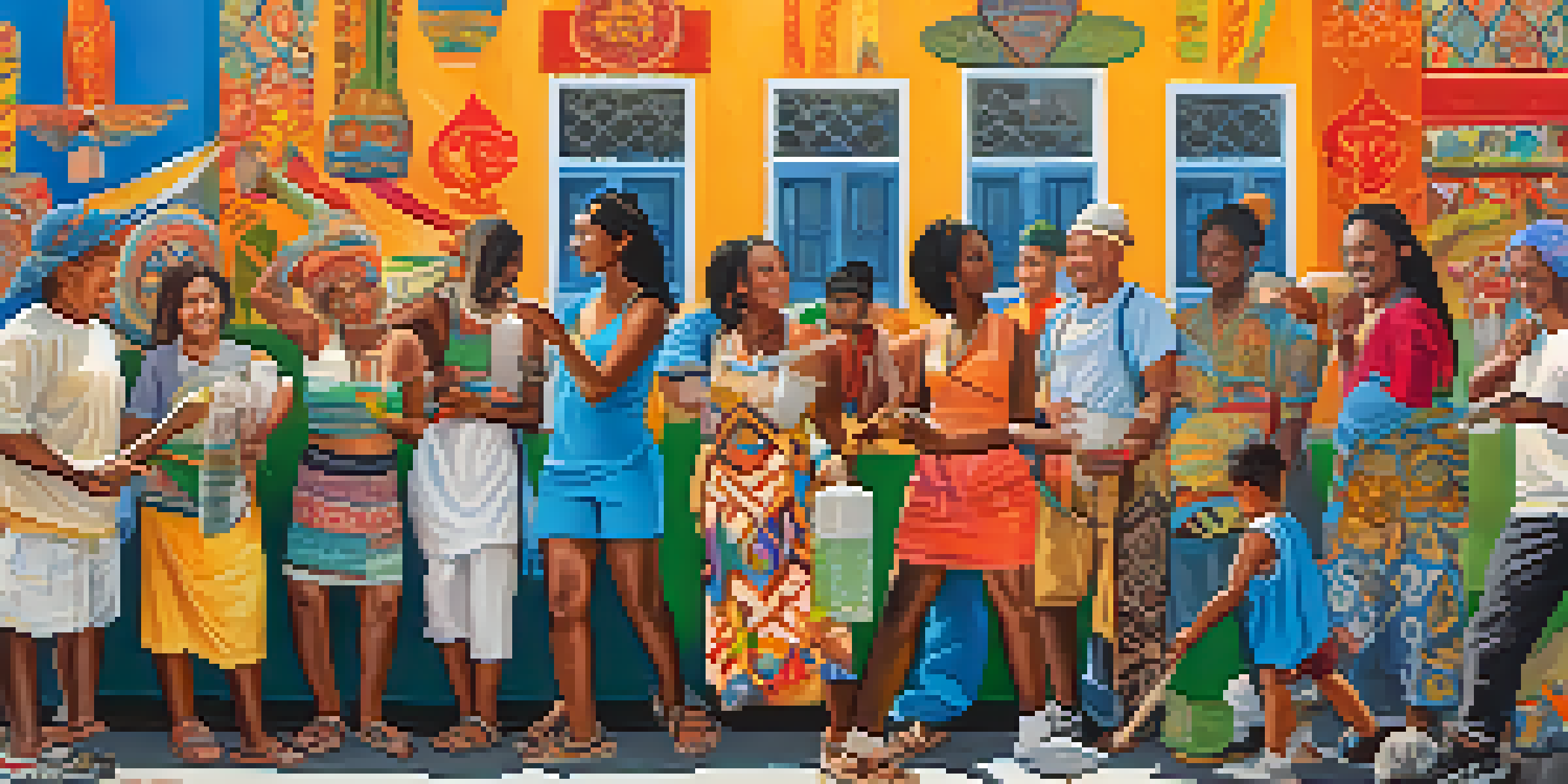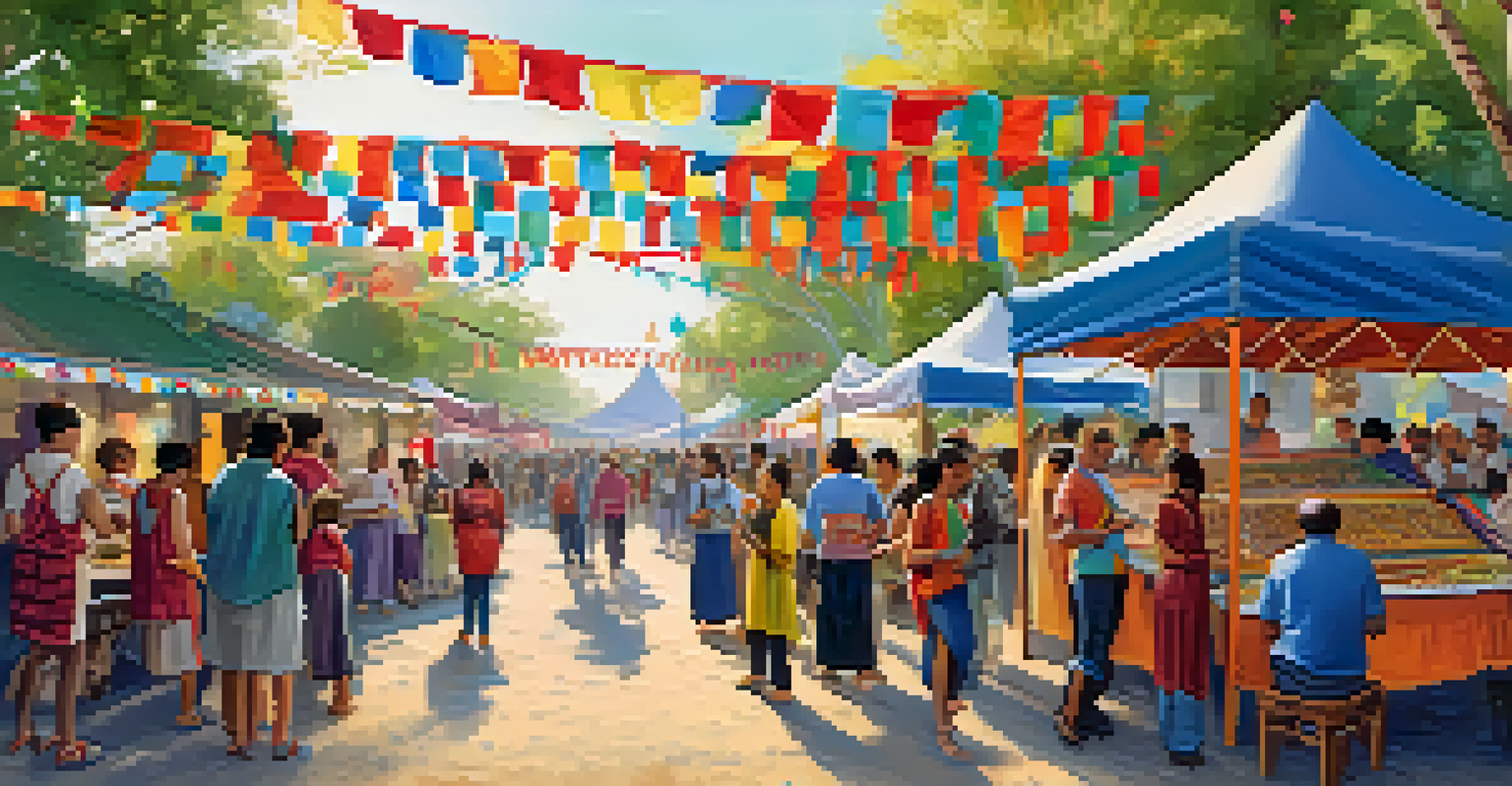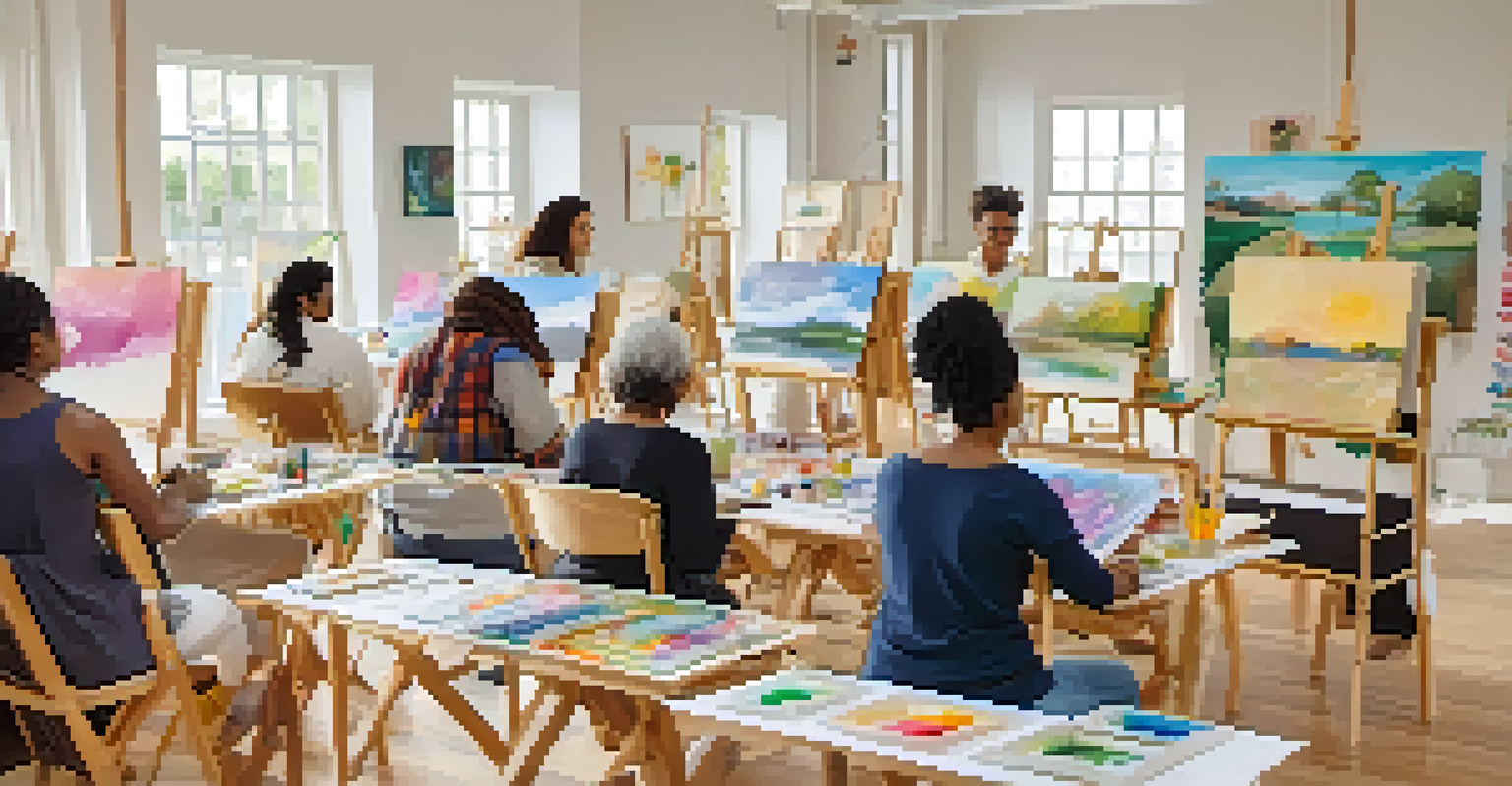Transforming Spaces: Art's Role in Revitalizing Communities

The Power of Art in Community Identity Formation
Art plays a crucial role in shaping the identity of a community. It reflects the values, history, and aspirations of the people who live there. When locals contribute to public art projects, they foster a sense of belonging and pride, creating a unique narrative that distinguishes their community from others.
Art is not freedom from discipline, but disciplined freedom.
Consider a neighborhood mural that tells the story of its residents—each brushstroke weaving together their experiences and heritage. This visual storytelling not only beautifies the space but also invites conversations among community members. It becomes a touchstone for cultural expression, encouraging people to connect through shared history.
As these artistic expressions flourish, they can attract visitors and new residents alike. This influx often leads to economic revitalization, as art can spark interest in local businesses and boost tourism. Thus, community identity, reinforced through art, becomes a catalyst for broader transformation.
Public Art as a Tool for Community Engagement
Public art initiatives can effectively engage residents in their community. By involving locals in the creation process, these projects cultivate ownership and pride. When individuals actively participate in designing or painting a mural, they’re not just observers; they become part of the artwork's story.

For example, a community garden adorned with sculptures created by local artists can serve as a gathering space for residents. Such installations foster collaboration and dialogue, bridging gaps between diverse groups. People from different backgrounds come together, united by a shared appreciation for creativity and collaboration.
Art Shapes Community Identity
Art reflects the values and history of a community, fostering pride and a unique narrative.
Ultimately, public art initiatives can create lasting connections among community members. As they work side by side, they build relationships that transcend differences, promoting unity and understanding in the neighborhood.
Economic Benefits of Artistic Revitalization
Investing in art can lead to significant economic benefits for a community. When public art projects are initiated, they can attract visitors, increasing foot traffic to local businesses. This uptick in visitors not only boosts sales but also creates job opportunities within the creative sector and beyond.
Every artist dips his brush in his own soul, and paints his own nature into his pictures.
Take, for instance, a once-neglected district that has transformed through art. After commissioning various installations, the area sees an increase in cafes, galleries, and shops opening up, eager to cater to the new crowd. This ripple effect of economic stimulation exemplifies how art can be a powerful driver of change.
Moreover, the presence of vibrant art can lead to higher property values. As neighborhoods become more appealing, potential homebuyers and investors take notice. Thus, the economic impact of art in revitalization extends beyond immediate gains—it lays the groundwork for long-term growth and sustainability.
Art as a Catalyst for Social Change
Art has always been a powerful medium for social commentary and change. Through thought-provoking installations or performances, artists can shed light on pressing social issues, sparking conversations that inspire action. By addressing topics like inequality or environmental concerns, art encourages communities to reflect and engage.
Consider street art that highlights local struggles or celebrates diversity; it serves not only as decoration but as a call to action. These visual narratives can galvanize communities, promoting advocacy and awareness around critical issues. As residents rally around these themes, they become more involved in creating solutions.
Public Art Engages Residents
Involving locals in public art projects cultivates ownership and strengthens community bonds.
In this way, art transcends mere aesthetics. It becomes a vehicle for dialogue, pushing communities to confront their challenges and work collectively toward positive change. By harnessing the power of art, communities can transform not just their spaces, but also their social landscapes.
Healing Through Art: Mental Health and Community Wellness
Art has therapeutic benefits that can significantly enhance community wellness. Engaging with art, whether through creation or appreciation, can improve mental health by fostering self-expression and emotional release. In community spaces, art initiatives can provide safe havens for individuals to explore their feelings and experiences.
For example, community workshops that focus on art therapy encourage participants to express their emotions creatively. This practice can be especially beneficial for those dealing with trauma or stress, giving them a constructive outlet. As individuals heal, they often share their experiences, further strengthening community bonds.
Thus, by prioritizing art in community wellness programs, neighborhoods can cultivate resilience and support systems. These initiatives promote not only individual well-being but also collective healing, reinforcing the importance of art in revitalizing both spaces and lives.
Strengthening Community Through Cultural Festivals
Cultural festivals centered around the arts can be a powerful means of community revitalization. These events celebrate local talent and cultural heritage, attracting people from all walks of life. By showcasing music, dance, visual arts, and food, festivals create a vibrant atmosphere that fosters connection and joy.
Take a local arts festival, for instance; it serves as a platform for artists to display their work while simultaneously uniting the community. Residents come together to celebrate creativity, share stories, and enjoy a sense of belonging. The festival not only enriches the cultural landscape but also stimulates the local economy through increased attendance to nearby businesses.
Economic Growth Through Art
Investing in art attracts visitors and boosts local businesses, leading to long-term economic revitalization.
Ultimately, cultural festivals create lasting memories and relationships. They encourage residents to engage with one another, reinforcing community ties and building a shared sense of identity. In this way, art becomes a vehicle for celebration and connection, revitalizing the community spirit.
Collaborative Art Projects: Bridging Divides
Collaborative art projects can serve as powerful tools for bridging divides within communities. By bringing together individuals from diverse backgrounds, these initiatives foster teamwork and understanding. When people collaborate on a shared artistic vision, they break down barriers and cultivate empathy.
For example, a community mural project that invites participation from various demographics can spark conversations among participants. As they work side by side, they learn from each other’s perspectives, fostering a sense of unity and respect. This collaboration helps to create a more inclusive environment where everyone's voice is valued.

In this way, art becomes a medium for dialogue and connection. It allows communities to celebrate their differences while working toward a common goal—creating a shared masterpiece that reflects their collective identity. Through collaborative art, communities can transform not only their spaces but also their social dynamics.